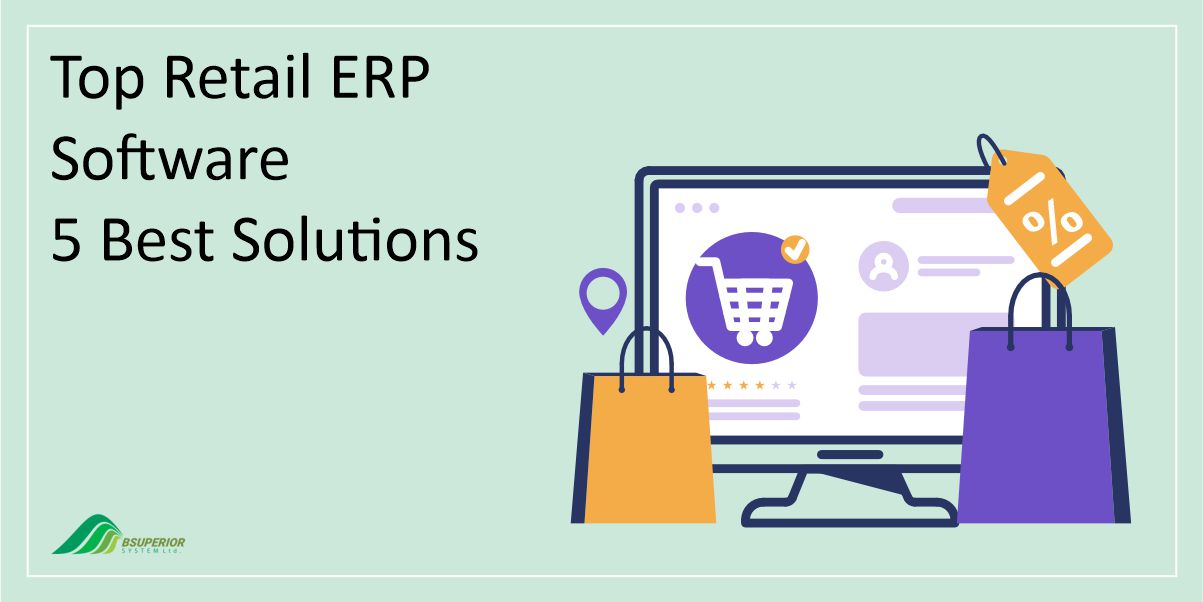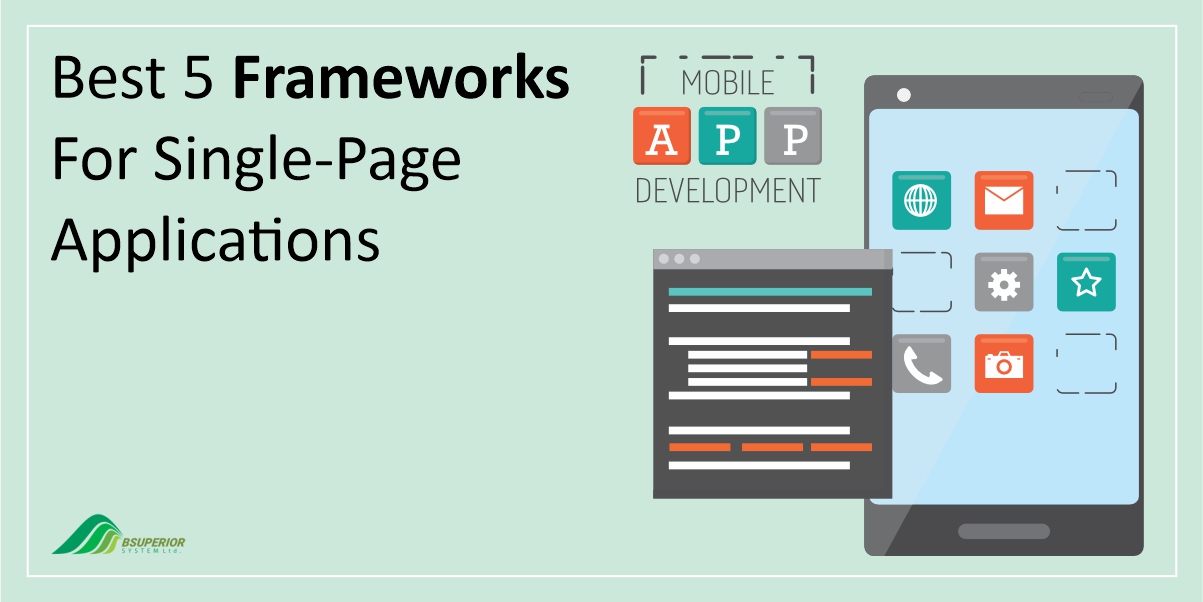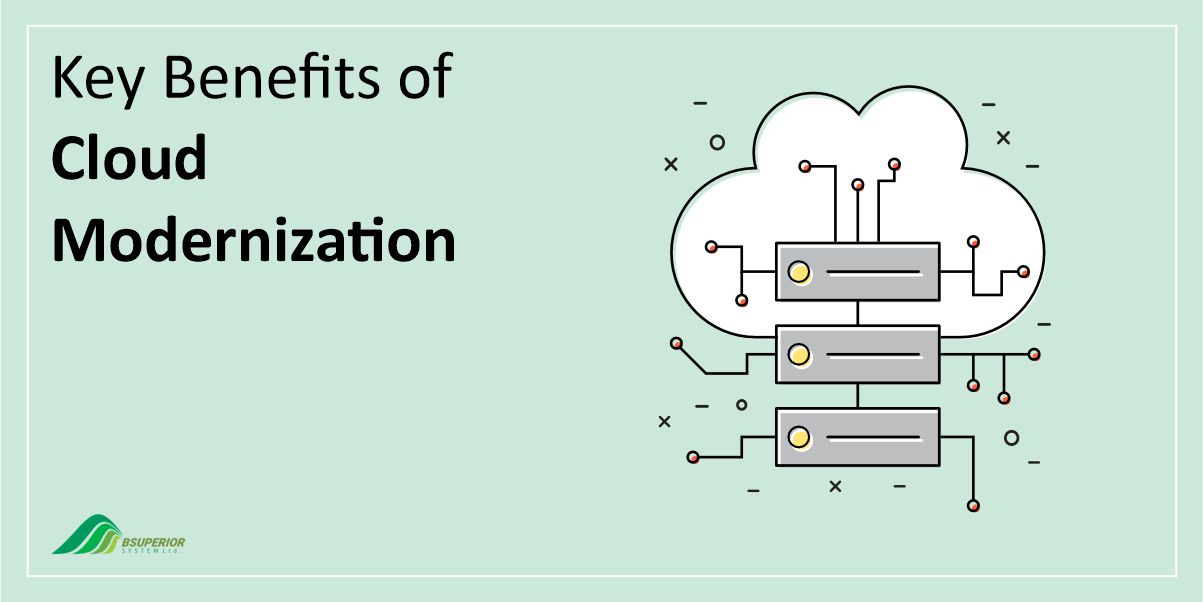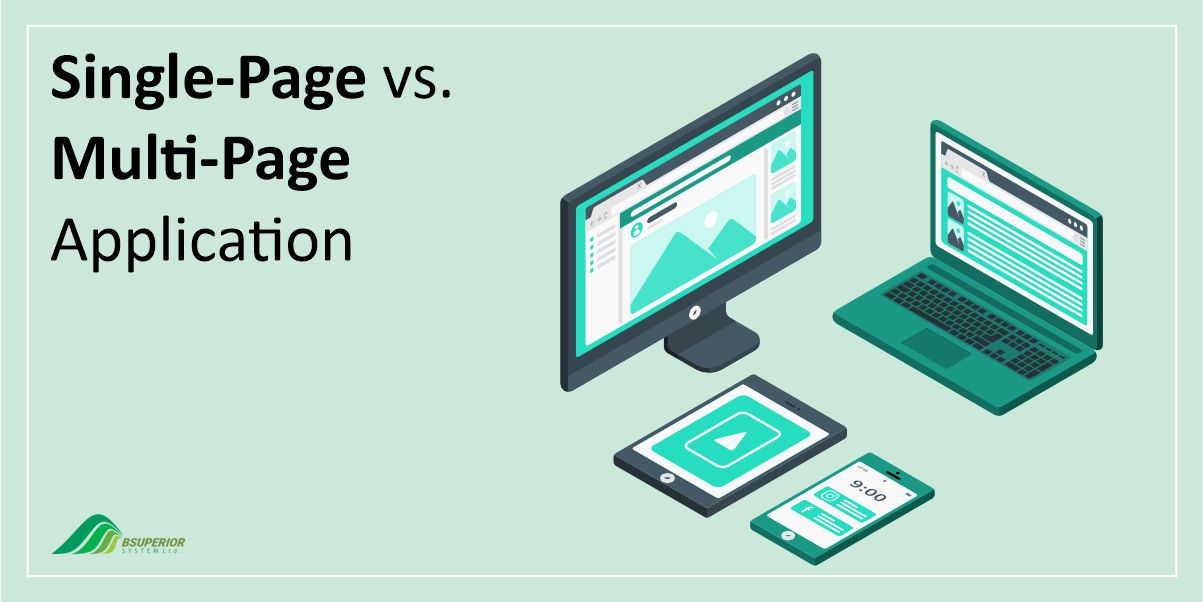Legacy System Migration Solution: Top 5 Migration Strategies
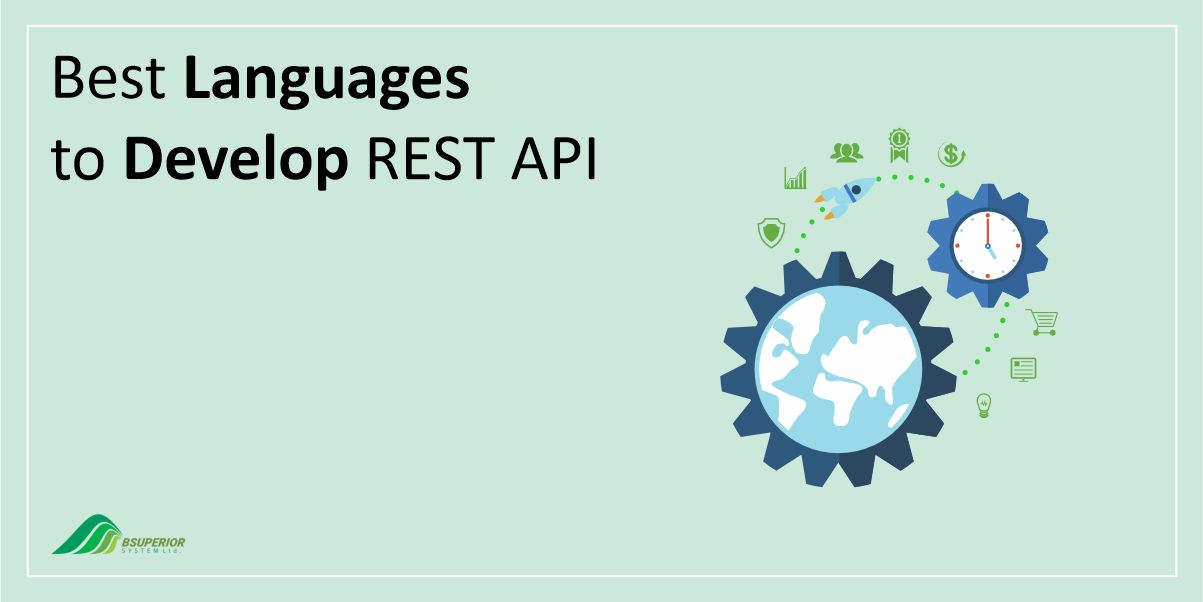
When you want to migrate legacy systems, there are a variety of options to choose from. You can go with rehosting and migrate to the cloud with minor changes, or make use of the refactoring strategy and completely rebuild your legacy systems.
If you want to learn more about these migration strategies, this blog post is for you. In what follows, we will examine 5 most common migration approaches and specify each one’s upsides, downsides, and use cases.
What are Legacy System Migration Solutions?
To give you a definition of legacy system migration, we need to begin by explaining legacy systems. Companies often rely on outdated computer systems, software, and applications.
While these systems, which are called legacy systems, are essential for daily operations, they are costly and hard to keep running. This is mainly because legacy systems use old technology and thus are difficult to integrate with modern systems.
To deal with this issue, companies opt for legacy system migration. This is the process of moving data, applications, and processes from these old systems to new and modern platforms.
Legacy system migration involves moving them to the cloud or simply updating the hardware without changing the software itself.
Why Migrate Legacy Systems?
There are several important reasons that underline why you must consider migrating your legacy systems. These reasons are discussed below.
Better Performance and Scalability
Legacy systems often struggle to keep up with today’s business needs. They lack the power and flexibility of modern technologies and thus lead to sluggish performance and bottlenecks.
Upgrading to a cloud-based solution, microservices architecture, or modern frameworks such as .NET Core or ReactJS will significantly boost your system’s speed and scalability.
Since these new technologies are built to handle the demands of modern businesses, they support current trends and work seamlessly for tech-savvy users.
Security Upgrade
Security is considered a major concern with legacy systems. Often unsupported by the original developer, they lack the security features and protocols needed to protect your data in today’s threat landscape.
Built before modern hacking methods, these systems are vulnerable to breaches and leaks. As a result, migrating to modern software becomes a necessity that provides a security shield with advanced frameworks, encryption, and authentication.
This not only improves performance but also safeguards your valuable data and guarantees compliance with industry regulations.
Integration
Given that legacy software mainly operates in isolation, it struggles to connect with other systems and new technologies. This is problematic because it makes it difficult to integrate with essential tools and limits your ability to take advantage of cutting-edge advancements.
By migrating to the cloud or modern frameworks, you will have access to powerful integration capabilities. Your software can then connect smoothly with other business systems, APIs, and frameworks like .NET Core, React, and Angular.
Staying Ahead of the Curve
The tech world moves fast, and businesses need to keep up to innovate and compete. Migrating to modern technologies future-proofs your software.
This ensures compatibility with evolving platforms, frameworks, and infrastructures, whether you are using desktop applications or other outdated systems. By staying up-to-date, you open doors to new technologies and pave the way for future innovation.
Common Challenges in Legacy System Migration
When you decide to migrate from a legacy system, there are various challenges that your organization might encounter. Generally, the older the system, the harder it is to migrate or update. We will highlight some of these challenges below.
Disrupting Operations
Upgrading a legacy system is very likely to disrupt business operations. One of the most common approaches in this regard is the so-called Rip and Replace strategy which involves completely swapping the old system for a new one.
This can cause a significant slowdown, especially for businesses that need to be flexible and adaptable.
Expensive Process
Migrating is a costly process. New software is expensive, and you may end up paying for both the old and the new systems for a while. While this issue is not specific to legacy system migration, it is still an important factor to take into account.
Integration
Another issue that may emerge is related to point-to-point integration which complicates modernization efforts.
Migrating systems using hand-coded point-to-point integrations can quickly entangle you in a complex and fragile application architecture.
To avoid this, you should use some form of mapping tool, whether it is a model-to-model tool or a model-driven engineering tool.
Migration Strategies
Now we are going to tell you about 5 of the most common and effective migration strategies. In each case, we will discuss the use cases as well as the advantages and disadvantages to give you a clear picture of the migration strategies.
1. Rehosting
Rehosting is a migration approach that allows you to migrate your applications and data to the cloud quickly with minimal changes. To put it in simple words, you pick up your existing software (lifting it) and place it in a new cloud environment (shifting it).
This means that you do not need to overhaul your application’s design, data flow, or security measures.
The important point to consider is to understand how much processing power, storage, and network bandwidth your application needs. Once you know that, you can match those requirements to similar resources offered by your cloud provider.
There is also a good chance you can save money with this strategy since cloud providers have more efficient resource allocation than on-premises setups.
What’s more, they typically let you scale your resources up or down easily, so you can start small and grow as needed.
Rehosting Use Cases
There are a number of situations where the rehosting strategy can be useful. These are:
- If your on-premises infrastructure is draining your budget but you cannot re-design your applications yet, rehosting offers a temporary parking spot in the cloud until you are ready for a full rebuild.
- Considering that you cannot re-architect pre-built software, rehosting gives you a straightforward way to migrate them as-is to the cloud.
Rehosting Benefits
The rehosting strategy is viewed as the fastest and most affordable method to migrate legacy systems. This approach offers quite a few advantages, such as:
- Minimal Rework: There is minimal need to rewrite code or change your application’s architecture.
- Quick Core Service Migration: You can move essential services such as Active Directory without much disruption to your business.
- Security Boost: Another advantage of the rehosting approach is that applications will benefit from the cloud’s security features after migration.
This includes services like role-based access control, multifactor authentication, and even unified security processes that span both cloud and on-premises environments. - Stepping Stone to Hybrid Cloud: Rehosting is a convenient way to migrate applications that are cloud-ready to a private or public cloud while keeping other workloads on-premises for now.
With the right management tools, you can treat both environments as a single, optimized infrastructure.
Rehosting Shortcomings
This approach comes with several limitations that you must be aware of.
- Limited Cloud Benefits: Legacy applications might not be built to make use of the full potential of the cloud, including scalability or distributed workloads.
- Performance Concerns: Applications designed for on-premises environments may experience slower speeds or glitches in the cloud without optimization.
- Migration Roadblocks: If the mapping between your application’s needs and the cloud configuration is inaccurate, there is a good chance that the migration will fail entirely.
2. Replatforming
The second migration strategy is replatforming which offers a middle ground between simply moving your system (migration) and completely rebuilding it (modernization).
Replatforming involves transferring your existing code and functionality to a new platform. This lets you hold onto essential features while unlocking some of the advantages of the new environment.
The replatforming approach is ideal for businesses that want to upgrade their technology but still value their investment in the legacy system.
Replatforming Use Cases
These are the scenarios where the replatforming approach will prove valuable.
- Web Applications: Moving web apps to the cloud enables them to use services like managed databases and content delivery networks.
- E-commerce Platforms: With replatforming, e-commerce platforms can tap into the cloud’s capabilities for handling surges in traffic. This keeps the customer experience smooth, no matter how many visitors you get.
- Legacy Systems: By replatforming, you can modernize outdated applications to run on cloud infrastructure.
- Data Analytics: Migrating data analytics workloads to the cloud provides you with access to powerful and cost-effective computing resources which will help analyze data faster.
Replatforming Benefits
Replatforming is a beneficial migration strategy that helps businesses strike a balance between cost and cloud benefits.
- Benefiting From Cloud Service: With minimal adjustments, your applications can use powerful cloud-based services such as managed databases.
- Scaling: Replatforming for the cloud gives you the chance to scale up or down applications effortlessly to meet fluctuating demands.
Also, you benefit from more robust disaster recovery capabilities that will help your business experience minimal downtime in case of disruptions. - Affordable: Compared to a complete re-architecture of your system, replatforming is a more affordable approach.
You will achieve improvements in your application’s performance and functionality without requiring extensive changes to your existing codebase.
Replatforming Shortcomings
Replatforming is subject to several limitations. These are:
- Scope Creep: Replatforming does not always go according to the plan and might easily expand beyond initial plans, from minor adjustments to extensive re-architecting.
- Configuration Risks: Making changes to an application, even minor ones, is likely to introduce new errors or configuration issues.
- Detailed Planning Essential: A clear roadmap that specifies desired changes is important to prevent unexpected challenges.
3. Refactoring
The third migration strategy that we want to mention is refactoring which is regarded by many as the most complex approach. In refactoring, you completely re-architect your application to fully take advantage of cloud capabilities.
By breaking down monolithic applications into smaller, independent microservices, refactoring improves scalability, reliability, and automation. It is quite similar to rebuilding a house from the ground up and creating a modern, energy-efficient home.
Although the initial investment is high, the long-term benefits outweigh the costs, making it a worthwhile endeavor for many organizations.
Refactoring Use Cases
Refactoring is a powerful approach to cloud migration that works best in the following use cases:
- When your existing system does not keep up with business demands or is too costly to maintain.
- If a single, large application is hindering your ability to innovate and respond to customers.
- When you lack the knowledge or resources to maintain the application.
- When migrating to the cloud requires splitting your database for security or compliance reasons.
Refactoring Benefits
Refactoring offers many advantages when it comes to cloud migration. These benefits include:
- Cost Efficiency: By aligning resource usage with actual needs, refactoring will lead to considerable cost savings over time.
- Adaptability: Cloud-native architectures and microservices enable rapid responses to changing market conditions and customer preferences. Moreover, you can easily add new features or modify the existing ones.
- Resilience: Breaking down applications into smaller, independent components and using cloud-based services improves the system’s ability to withstand failures and disruptions.
Refactoring Shortcomings
Let’s take a look at some of the downsides of this migration strategy.
- Resource Intensive: It requires a great deal of manual effort and highly skilled teams with expertise in coding, automation, and DevOps.
- Time-Consuming: Unlike simpler migration approaches such as rehosting, refactoring projects take longer to become profitable.
- Risk of Errors: The intricate nature of refactoring increases the likelihood of coding, infrastructure, and configuration errors. It is important to note that even small mistakes can lead to project delays, budget overruns, and service disruptions.
4. Repurchasing
Repurchasing is a migration strategy where you replace in-house systems with pre-built cloud services. This shift from owning to subscribing to software lowers the operational burden and accelerates the move to a cloud-based model.
By outsourcing system management to third-party providers, organizations can focus on fundamental business activities. This approach also speeds up migration, minimizes downtime, and improves scalability.
It’s particularly suitable for applications that require high performance and user experience.
Repurchasing Use Cases
The repurchasing approach is mainly considered in the scenarios below:
- When Legacy systems hinder agility and innovation.
- When new cloud services offer capabilities that can enhance business performance and competitiveness.
- In cases where the cloud-based solutions provide you with features and integrations that are not available in legacy systems.
- When your priority is to reduce the complexity and cost of managing on-premises infrastructure.
Repurchasing Benefits
Repurchasing offers a number of important benefits, including:
- Access to Cutting-Edge Technology: By adopting pre-built cloud solutions, you can quickly benefit from the latest innovations without the need for extensive development or infrastructure investments.
- Ready-to-Use Solutions: Cloud services are pre-configured, which means that they help you save time and effort on setup and configuration.
- Scalability: Cloud-based models allow businesses to easily adjust resource allocation based on changing demands.
Repurchasing Shortcomings
There are several limitations that you need to consider when you use the repurchasing strategy. These downsides include:
- Higher Costs: In some cases, using a cloud service may turn out to be more expensive than running the application in-house.
- Dependency on Internet Connection: A reliable high-speed internet connection is crucial since poor connectivity will probably cause disruptions.
- Limited Customization: If your application has unique requirements, it is possible that a pre-built cloud service won’t be able to meet all your needs.
5. Retiring
When planning a cloud migration, you may realize that some applications are no longer worth the effort of moving to the cloud. In such cases, you can decide to retire the application.
In other words, you will eliminate legacy applications that are no longer supported or valuable. If the costs and complexities of migrating these systems to the cloud override the benefits, retiring them is a viable option.
By removing these inefficient systems, organizations pave the way for adopting modern and cloud-based solutions.
Retiring Use Cases
In the following situations, the retiring approach is a better choice:
- The application does not contribute to business goals.
- Eliminating the legacy systems lowers maintenance and hosting expenses.
- The legacy systems pose security threats.
Retiring Benefits
The retiring strategy provides you with several advantages, such as:
- Cost Savings: Retiring helps you eliminate ongoing expenses related to maintenance and operation.
- Efficiency: This strategy also frees up IT resources for higher-priority projects.
Retiring Shortcomings
Keep in mind that the retiring strategy has the following disadvantages:
- Unexpected Dependencies: Removing an application without careful analysis will disrupt other systems.
- Data Loss: If the application contains valuable data, retiring it could lead to information loss.
Steps to Plan a Successful Migration
In order to successfully migrate legacy systems, you need well-thought-out planning and execution. Such planning requires following a number of important steps that are explained below:
- Identify Critical Data: First of all, you should specify the essential data to be migrated, its format, and necessary security measures.
- Assess Resources: You should also evaluate the time, technology, and budget required for the migration.
- Create a Backup: More importantly, you need to make sure that your data is protected by creating a comprehensive backup before starting the migration.
- Develop a Migration Plan: You must come up with a clear and manageable roadmap for the process.
- Thorough Testing: Another important step is to test the new system at every stage to identify and address issues.
- Ongoing Monitoring: Last but not least, you should continuously monitor the system’s performance after migration to ensure optimal operation.
Final Words: A Smooth Transition with BSUPERIOR
It is clear that a well-crafted legacy migration strategy is crucially important for reaping the benefits of the cloud. On the other hand, a poorly executed plan can lead to wasted resources and suboptimal performance.
With that being said, partnering with experienced cloud migration experts can significantly raise your chances of achieving desired outcomes and avoiding costly pitfalls. We at BSUPERIOR can help you with that.
As a leading software development company, we offer comprehensive cloud migration solutions tailored to your specific needs.
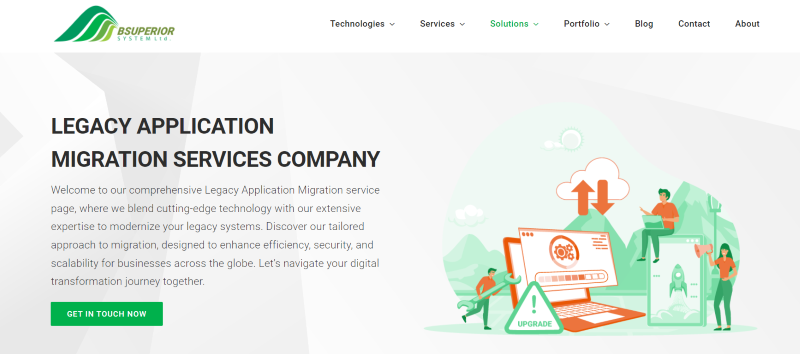
Our expertise in AWS, Azure, DigitalOcean, and Linode, combined with our DevOps prowess, guarantees a seamless and successful transition.
From initial assessment to ongoing management, our services cover every aspect of your cloud migration journey. We will help you optimize your operations, enhance security, and future-proof your applications.
If you are looking for a way to harness the full potential of the cloud, let BSUPERIOR be your trusted partner. Contact us today to learn more about our cloud migration services.
We value your input and believe this content may enhance our services. However, it's under review. If you see room for improvement, please use the "Report an issue" button below. Your feedback helps us excel.
Contact us today at –– and speak with our specialist.

